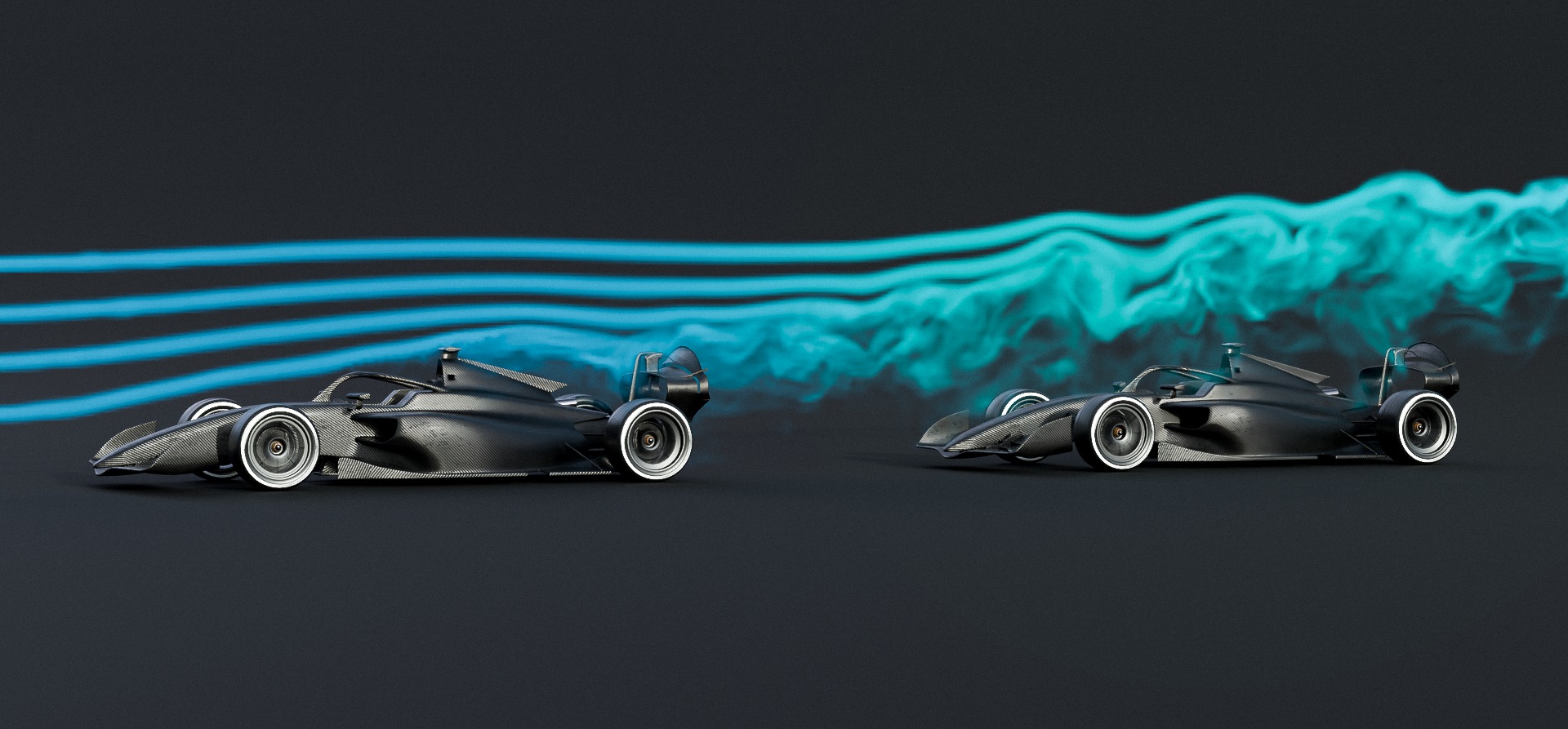Event
Formula 2 2024 season: Title battle goes down to the wire after Qatar F2 races
by Samarth Kanal
8min read

After the round in Qatar, half a point separates the two 2024 Formula 2 Championship leaders going into the finale in Abu Dhabi - where Invicta Racing’s Gabriel Bortoleto and Campos Racing’s Isack Hadjar will face off for the title over the last two races of the season.

Sign up for a newsletter and we'll make sure you're fully up-to-date in the world of race technology

Invicta Racing’s Gabriel Bortoleto celebrates on the feature race podium in Qatar
Why was it so hard to overtake in Qatar?

CFD simulation courtesy of Simscale showing the higher pressure flow encountered by the car in front (R) compared to the lower pressure flow encountered by the car behind (L)

Simulation of slipstreaming in F2 with turbulent air affecting the car behind

Oliver Bearman passing Isack Hadjar in the F2 sprint race at Qatar
.jpg?cx=0.5&cy=0.5)
Oliver Bearman leads leads Jak Crawford over the line in the Qatar F2 feature race
Bortoleto and Invicta error sends title fight to Abu Dhabi
The main difference from what I’m used to is definitely pitstops. It’s a lot more complex than what people think - stopping in the right place, pushing at the pit entry and pushing on cold tyres afterwards as well.
Dino Beganovic
, F2 driver
.jpg?cx=0.5&cy=0.5)
The pit entry at Qatar is on the main straight of the track, just after the final corner
The challenge of stepping up to F2 mid-season

Dino Beganovic driving for DAMS at the 2024 Qatar F2 round

The Ferrari F1 simulator building at Maranello



.jpg?cx=0.62&cy=0.39)
/xpb1325482hires-1-1/xpb_1324816_hires-(1).jpg?cx=0.5&cy=0.5)

.jpg?cx=0.5&cy=0.5)


